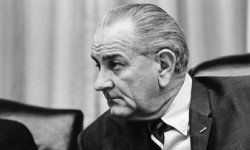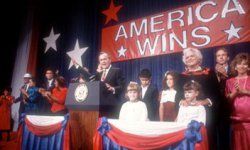The 2012 election season is one for the record books. According to estimates published in AdAge, political campaigns and their supporters are expected to spend $9.8 billion on advertising, and over half of that on television ads. That total is up from $7 billion in 2008, largely because of a Supreme Court decision that allows unlimited political contributions from corporate donors [source: Delo]. More than ever, a small number of wealthy Americans are flexing their messaging muscle through attack ads created by so-called SuperPACs, or independent political action committees.
The modern campaign ad looks and feels like a horror movie trailer. Clouds gather and thunder rolls as the gravely voiced announcer cites sobering and often shocking statistics about the opposition. Then the clouds retreat and the sun shines on our hero, who will rescue America from the recession, foreign entanglements and, of course, "politics as usual."
Advertisement
Political ads weren't always this slick and sophisticated, but they've always been effective at driving messages home to the voting public. We're going to look at the top five most effective campaign TV ads from the past 60 years, starting with what many consider the very first presidential campaign to embrace the medium.


